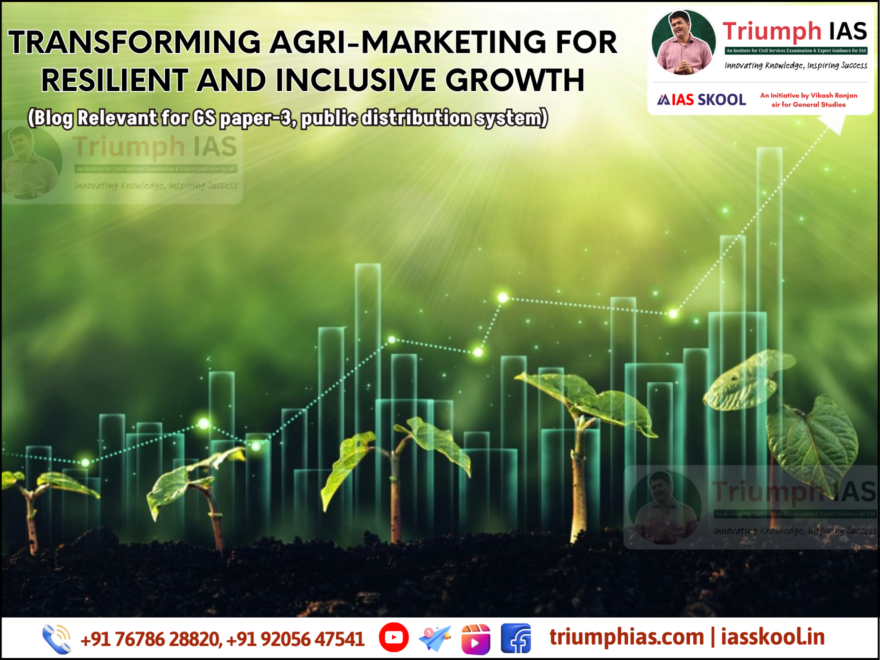Transforming Agri-Marketing for Resilient and Inclusive Growth
(Relevant for GS paper-3, public distribution system)
|
India’s agriculture sector, employing over 45% of the population and contributing around 18% to the Gross Value Added (GVA) in 2023-24, remains foundational to its economy. Yet, despite its size, the sector continues to face inefficiencies in marketing, price realization, and global competitiveness. The need for reforming agricultural marketing has become more urgent in light of increasing trade volatility, geopolitical tensions, and climate-induced supply shocks that disrupt both domestic and international agri-trade flows. The Current Landscape of Agri-MarketingAgricultural marketing in India is primarily regulated by the Agricultural Produce Market Committee (APMC) Acts of states, which mandate that farmers sell their produce through regulated mandis. While originally meant to protect farmers from exploitation, APMC mandis have increasingly become known for cartelisation, high commission charges, lack of infrastructure, and delayed payments. The 2017 e-National Agriculture Market (e-NAM) initiative aimed to digitize and integrate mandis, but as of 2024, it covers only about 1,260 markets, and limited inter-state transactions have occurred. Farmers still rely heavily on local traders and middlemen, restricting their access to wider markets and better prices. Impact of Global Trade UncertaintyRecent geopolitical tensions, such as the Russia-Ukraine conflict and the Red Sea shipping disruptions, have led to increased volatility in global food prices and input costs. India’s ban on exports of non-basmati white rice and restrictions on wheat and sugar exports in 2022-24 were responses to concerns about domestic inflation and food security. However, such export bans have a dual impact:
According to the Food and Agriculture Organization (FAO), global food prices in early 2024 remain elevated, and protectionist tendencies are expected to continue. This limits India’s ability to integrate into global agri-value chains unless marketing reforms make the domestic system more efficient and resilient. Key Challenges in Agri-Marketing
Recent Government Measures
Suggestions for Reform
The Road AheadIndia must move from a supply-driven to a market-oriented agricultural model. Effective agri-marketing reforms can improve farmer incomes, attract private investment, and stabilize food prices. Given the complexities of federalism, cooperative federalism between the Centre and States is crucial. India’s G20 Presidency in 2023 emphasized resilient and inclusive food systems, which should now be pursued domestically through better marketing structures and policy coherence. Ultimately, strengthening agri-marketing is not just about economic efficiency, but also about empowering farmers, ensuring food security, and making Indian agriculture globally competitive amid rising uncertainties. |
To Read more topics like Transforming Agri-Marketing for Resilient and Inclusive Growth in Public Posts, visit: www.triumphias.com/blogs
Read more Blogs:
Rise of Influencer Culture and Its Impact on Body Image and Gender Identity


One comment